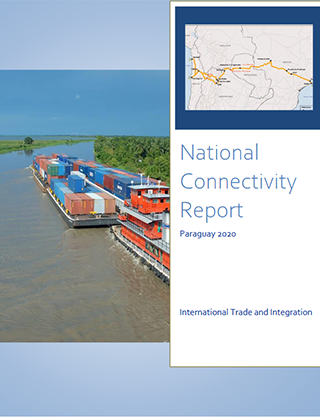Sustainable Transport Connectivity Indicators
The National Connectivity Report (NCR) is managed by the United Nations Economic Commission
for Europe (UNECE) in collaboration with the United Nations Economic Commission for Latin
America and the Caribbean (ECLAC) and the United Nations Economic and Social Commission for
West Asia (ESCWA) and is developed under UNDA funded “Sustainable transport connectivity and
implementation of transport-related Sustainable Development Goals (SDGs) in selected
landlocked and transit/bridging countries” project. The NCR report covers and measures the
performance of inland transport modes: railway, road and inland waterway (ILW) transport
modes. In Paraguay’s NCR, railway transport indicators are not covered because railways are
not used for cargo transport. All modes of transport are studied through three key pillars:
economic, social and environmental sustainability.
Five (5) pilot countries, were selected from different regions of the world in
order to measure inland transport connectivity, compare each country performance and
evaluate connectivity progress in the next years. Paraguay is one of the pilot countries
where the SITCIN will be tested and based on the results, the indicators will be further
finetuned. The NCR preparation process is generally divided into following key phases:
data-collection and meta-analysis, relevant fact-finding missions and interviews with the
stakeholders, structure findings and recommendations, discussion of NCR results on national
policy dialogue meeting with the stakeholders. After approval of the NCR, capacity-building
workshops will be held targeting the most pressing topics in inland transport policy based
on the NCR recommendations and findings.
